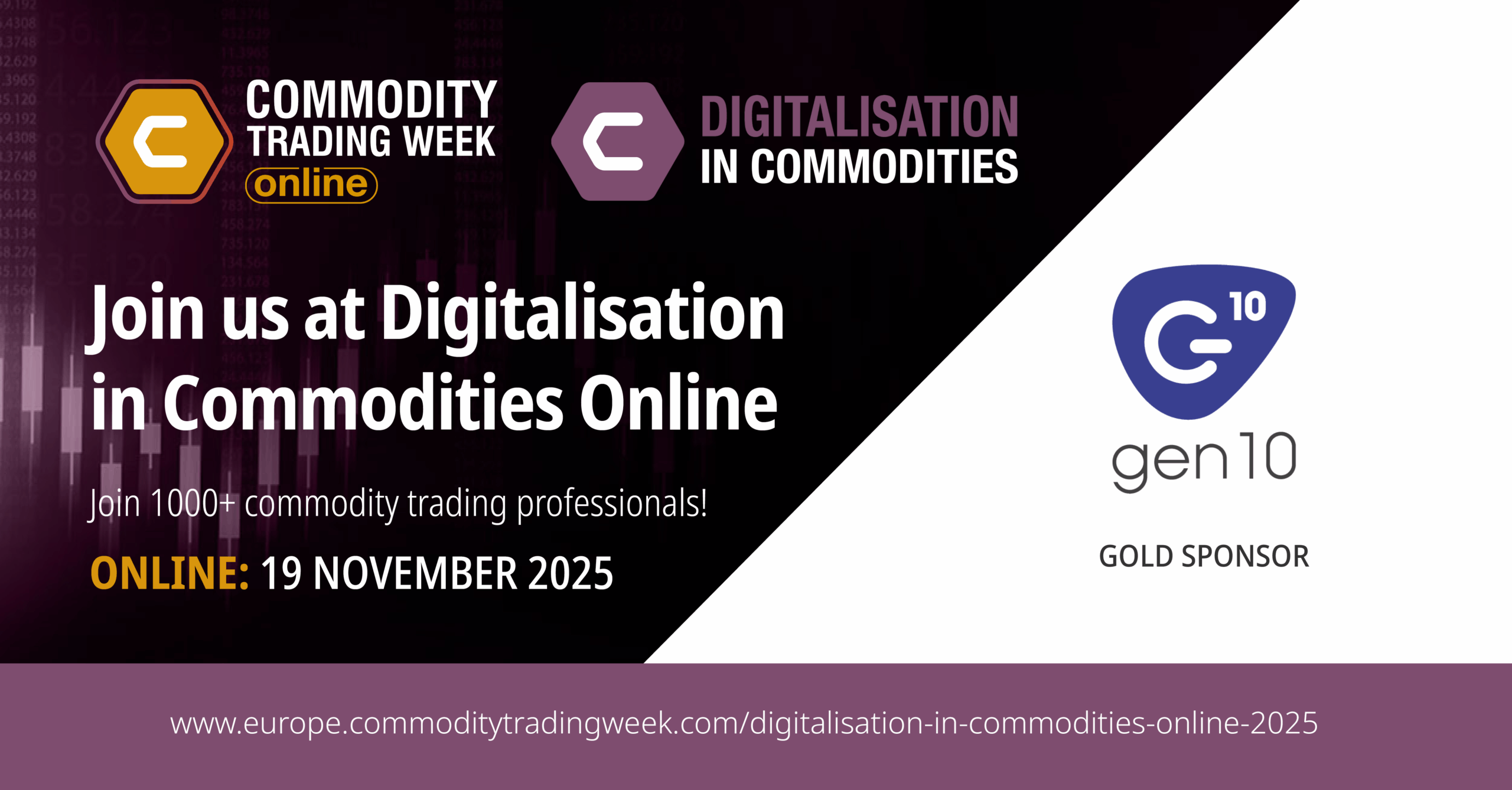Gen10’s Bruce Tozer recently joined a panel session discussing data driven sustainability with sustainability and technology experts from across a range of commodities. Thanks to the team at Commodities People, we share this session recording below.
Alongside Bruce, the panel included Moderator Julian Gray, Former VP of Digital Science and Digital Innovation in the energy industry; Mark Hankins, Director Enterprise Architecture at ADM, and Léa Yue Xu, Project Manager – Global Digital Innovation at Louis Dreyfus Company.
The panel discussed a wide range of sustainability issues in the 30-minute conversation, including how broad a topic sustainability actually is, the importance of defining the problem you are looking to address, accessing sustainability data, and creating value from this data. The speakers also answered several audience questions on sustainability data.
Without going into all the detail of the full recording, below we highlight some of the key talking points from the session.
Defining the problem
Julian started the conversation by explaining that in his experience, sustainability only works if you put it into the operations of what you’re doing, and that you can’t rely on guesstimates. This sparked a discussion around defining the problem that you’re trying to solve. Bruce expanded on this by explaining that after defining the problem, you then need to decide what is material, and make conscious choices about what you choose to measure.
Lea added the importance of defining your scope with so many potential sustainability issues to address; not only carbon and human rights issues, but water, biodiversity and others are becoming more important too. Mark further elaborated by discussing how data driven sustainability is a journey that starts from asking what you need to measure, and how can you show its real impact?
Accessing the data
When considering technologies, we need to think about the problem first. It might be around capturing data we do not have or about reconciliation, when the data is somewhere, but we cannot use it. So, depending on the problem, the solution can be different.
Bruce shared his opinion that there’s masses of really valuable data lurking within businesses and if you can get it off spreadsheets and into something systemised, which unifies it more easily, that’s where the real advantage comes in.
Using sustainability data
Panellists also discussed the dichotomy between what the business side want to do in terms of product differentiation and a higher price, and the corporate reporting that you also have to do, when these have different requirements. But if you can base these off a standard data set, you can drive both and know there is consistency.
And on incorporating multiple and complex ESG and human rights data Bruce had this to say about Gen10’s Aud.IT app:
So we created a handheld app which allowed 5000 smallholder farmers to be tracked, and they still had to go and collect the data, but it could be downloaded and you could build up a picture of what’s happening on the different farms and who is performing better and who is not… But you have very discrete concrete data requirements around that. Now, it doesn’t mean it’s perfect, but when you systemise it, you can see inconsistencies much quicker.”
Mark also highlighted the fact that we are possibly sending lots of Excel spreadsheets to some of the world’s poorest people and asking their time to fill them in. So there needs to be a conversation around limiting the impact on growers and on providing incentives for them to provide reliable information.
The importance of secondary data was also discussed, such as sponsoring schools in exchange for attendance data which can be used to establish whether children are in school rather than working on a farm.
Bruce also explained the role of another Gen10 app used for warehouse data in making this secondary data accessible, explaining the importance of having datasets linked to location data and how this could be used as a powerful source of secondary data if it were connected to other business tools. And one of the really interesting challenges is to define where we can knit those sorts of things together.
He agreed that unless you can get value to the farmer, and we use this data to make real decisions, this is going nowhere.
The session finished with comments around the issues of standardisation and sharing information, but this is an area where there is a huge potential gain, before taking questions from the audience.
Explore the topic of data driven sustainability in full detail now with the session recording.



